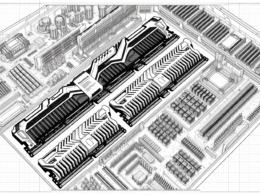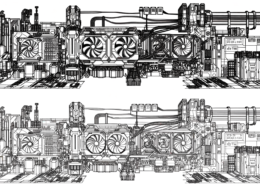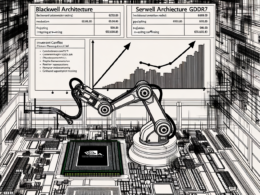In the world of gaming tech, all eyes are on AMD’s latest Ryzen Z2 Extreme chips, especially after their debut at CES 2025. The new gaming benchmarks have rolled in, and while the Z2 shows some improvements over its predecessor, the Z1, it’s not all smooth sailing.
Zooming In
Handheld Powerhouse
The Ryzen Z2 Extreme promises a boost in performance for handheld gaming. It features a mix of Zen 5 and Zen 5c architecture with more integrated graphics units than the Z1. Specifically, the Z2 sports 16 RDNA 3.5 compute units, as opposed to the Z1’s 12 RDNA 3.
Benchmark Saga
According to benchmarks, the Z2 offers a 33% increase in GPU compute units. You’d expect this to translate into a significant performance jump. However, real-world results tell a more nuanced story. In Cyberpunk 2077, the Z2 managed only 5 more frames per second than the Z1 at 1080p using the Steam Deck preset, a modest 12% improvement at a 25 W power cap.
Limiting Factors
The setback isn’t in raw power but in memory bandwidth. The Z2 coupled with its 24 GB LPDDR5x-8000 RAM had only 7% more bandwidth than its predecessor. This proved insufficient to handle its powerful GPU when both CPUs and GPUs are fighting over memory resources, especially at high resolutions and power settings.
Under the Microscope
Tests showed a drastic shift when reducing power to 17 W and the resolution — with the Z2 leading by about 22% over the Z1. At lower settings, the more robust APU in the Z2 flexed its muscles better, showcasing its hardware advantage. However, without sufficient bandwidth, those extra compute units in high-power scenarios can’t perform at full capacity.
The Broader Implication
In essence, handling more GPU cores within the limited space of an APU still faces memory bottlenecks. AMD knows this, hence their 256-bit memory bus in Strix Halo APUs which supports more bandwidth. But in the Z2, the promise of better performance is stuck within the confines of existing memory and power constraints.
For gaming enthusiasts keen on the Z2 handhelds, similar constraints might imply holding off until these bandwidth issues are addressed. Meanwhile, improvement through software updates and driver optimizations remains a hopeful path forward for unleashing the full potential of this handheld powerhouse.









